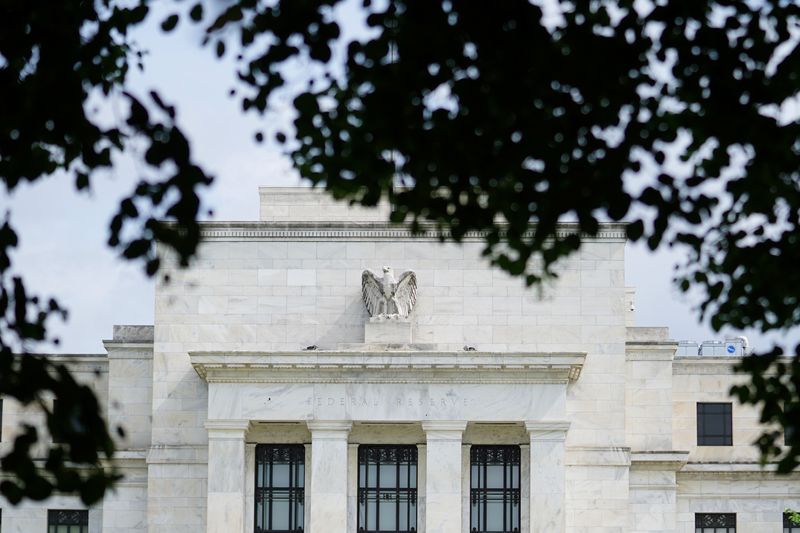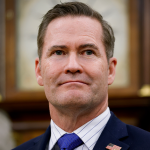
By Howard Schneider
WASHINGTON (Reuters) – The U.S. Federal Reserve is expected to reduce its benchmark policy rate by a quarter of a percentage point at the end of its policy meeting on Thursday, a decision that may seem a footnote given the uncertain economic terrain the central bank may soon be navigating under a second Trump administration.
Former president and Republican nominee Donald Trump’s return-to-office victory in Tuesday’s U.S. election and possible GOP control of both houses of Congress puts into play policy changes from tariffs to tax cuts to stifled immigration that could rewrite the outlook for economic growth and inflation Fed policymakers had expected to face next year.
It may take months for the proposals to evolve and work through Congress even under full Republican control.
But bond yields continued their recent rise in the wake of Tuesday’s results, and investors now expect the Fed will end up cutting interest rates less than previously anticipated as they take stock of a new economic regime that may mean higher federal deficits, higher growth, and higher inflation in the short run, and also come with longer-term risks.
“You can see over time, the direction of budget deficits, tariffs…can become a problem” for the Fed to manage, said TSLombard Chief U.S. Economist Steven Blitz.
After having free rein to raise interest rates to fight inflation in a strong economy, the central bank may end up “in second position” keeping up with shifts in trade and global capital flows triggered by administration policies, facing both rising prices and pressure to keep unemployment low, Blitz said.
Trump in his first term was open in calling for low interest rates, eventually branding Fed Chair Jerome Powell an “enemy” because of rate hikes he thought were unnecessarily stifling growth, a turbulent background to a relationship that will be closely watched in coming months.
Trump promoted then-Fed Governor Powell to lead the Fed in 2018, and Powell was reappointed by President Joe Biden to a second term that runs through May 2026, which Powell has said he intends to complete.
MURKIER OUTLOOK
The Fed is widely anticipated to reduce its benchmark policy rate by a quarter of a percentage point on Thursday to a range between 4.5% and 4.75%, a well-broadcast follow-up to the half-point reduction approved in September.
Market confidence in what happens next, however, has begun to weaken, with the Fed now expected to end its cutting cycle as soon as the middle of next year with a policy rate ending in the 3.75% to 4% range.
That is a full percentage point above the roughly 2.9% level Fed officials projected as of September.
It is also well above the policy rate that caused Trump to erupt against the Fed in his first term, when the Fed’s benchmark rate peaked at around 2.4%.
But monetary policy has been tightened and is being kept tight to return inflation to the central bank’s 2% target – a process of “disinflation” the Fed feels is not yet complete and which Trump may want to see continue given how big a role rising prices played in the campaign.
Yet the impact of Trump’s promised suite of economic policies could be difficult for the central bank to parse if tariffs start to shift global supply patterns with an uncertain impact on prices, growth and jobs, and various tax cuts are rolled out with a similarly hard-to-predict impacts on incomes, consumer demand, and government deficits.
Fed officials ahead of the election noted that they don’t set monetary policy in reaction to proposals from any administration, but take fiscal and regulatory decisions as a “given” and only respond to the economic outcomes those decisions generate.
They’ve been here with Trump before, raising rates in 2018 as his tax cuts led to unexpectedly strong growth and, from the Fed’s perspective, rising inflation risk, and cutting them in 2019 as his tariffs wars dimmed global growth prospects.
That won’t make it any easier to predict.
The Fed may cut on Thursday as expected, but “beyond this, the outlook has become murkier with the extent and timing of further cuts hinging on incoming data and Trump’s policy approach in 2025,” Macquarie economists David Doyle and Chinara Azizova wrote on Wednesday.






